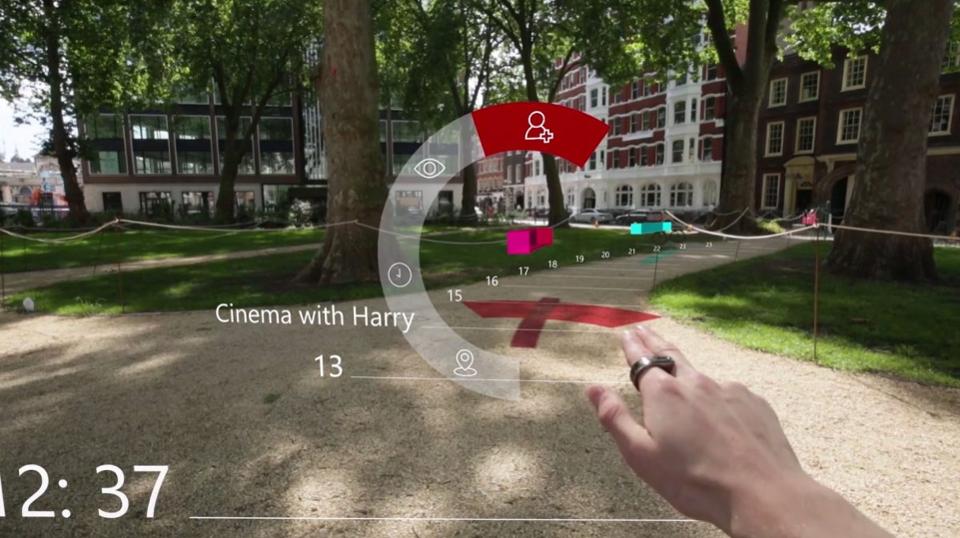Caption: Controlling an AR display with Scroll, credit to Nat/Vimeo/Forbes
We’ve seen super decoder rings and magic weight-loss rings, while Tolkien imagined One Ring to rule them all. These rings may be fun when it’s time to play make-believe, but they don’t work in the real world. Now a student in the Innovation Design Engineering Programat the Royal College in London has created a ring to control augmented reality (AR) displays. It not only works, it’s brilliant.
AR overlays digital content on the physical world. In principle, this could be a game-changer for both industry and everyday life, but before that can happen, methods have to be developed to control the AR display that is easy, effective and isn't embarrassing to use in public.
The large hand movements that are typical in virtual reality applications may have looked cool in Minority Report, but do you really want to walk around making big, dramatic hand gestures to check your email? Voice control is a viable option but voice commands are not always the most effective way to manipulate virtual objects in a 3-D physical space.
Adding a calendar entry with Scroll.
Nat Martin set himself the problem of designing a control mechanism that can be used unobtrusively to meld AR displays with the user’s real-world environment. His solution was a controller in the shape of a ring that can be worn on the user's finger. He calls it Scroll. It uses the ARKit software platform and contains an Arduino circuit board, a capacitive sensor, gyroscope, accelerometer, and a Softpot potentiometer. Scroll works with any AR device that supports the Unity game engine such as Google Cardboard or Microsoft’s Hololens.
Scroll gives you the same types of control over digital objects that you have with a mouse. You locate objects on a 2-D screen by moving the mouse; you locate virtual objects in real 3-D space by pointing with the finger wearing the Scroll. You scroll on a screen with the mouse’s scroll wheel; you scroll in virtual space or move objects closer and further away with a thumb-operated scroller located on the side of the ring. You select objects and carry out actions on a screen by clicking the mouse buttons; you do the same with Scroll by opening and closing your fingers in a scissor motion.
Describing Scroll doesn’t really do it justice. Watch the video above to see it in action. It’s amazing. If you would like more technical details about Scroll along with some information about what led Martin to develop it in the first place, check out this YouTube video.
My first thought after seeing what Scroll can do was “where can I get one?” Unfortunately, the answer to that question is you can’t short of going to London and asking Martin if he’ll let you try his. According to Martin’s website, he has a working wired prototype and a nonfunctional brass model designed to let people see what a final version might look like. A consumer version lies somewhere in the future – I hope. If Scroll pans out, a ring controller could become as essential to AR as the mouse is to desktops.
